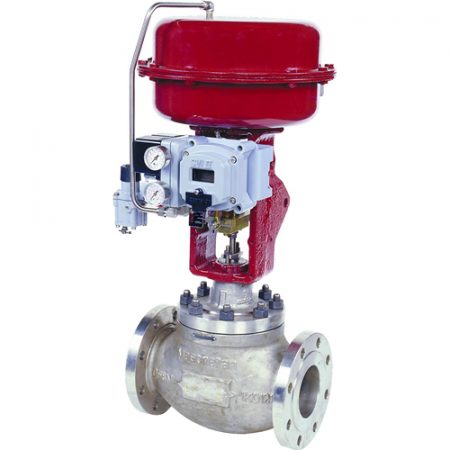How Control Valves Effect Power Efficiency in Industrial Settings
How Control Valves Effect Power Efficiency in Industrial Settings
Blog Article

Maximize Energy Financial Savings and Convenience With Advanced Structure Automation Controls
In the world of modern architecture and facility administration, the combination of advanced structure automation regulates stands as a critical advancement. By utilizing the power of automation, buildings can adjust, react, and develop in ways that were once inconceivable.
Energy Performance Perks
Energy efficiency benefits can significantly minimize power consumption and operational expenses in buildings. Energy-efficient systems, such as advanced building automation controls, can enhance the usage of resources like lights, air conditioning, and heating, leading to reduced energy expenses over time.
Moreover, improved energy effectiveness can lengthen the lifespan of structure devices and systems. By running extra effectively, HVAC systems, light, and other structure components experience less damage, causing decreased maintenance and substitute prices. In addition, energy-efficient structures typically regulate higher residential or commercial property worths and rental prices, supplying lasting economic benefits to owners.
Moreover, power effectiveness can improve owner comfort and efficiency. Correctly controlled indoor atmospheres with ideal lighting and thermal conditions create an even more enjoyable and favorable work area, resulting in enhanced staff member fulfillment and performance. Overall, the energy efficiency benefits connected with sophisticated building automation controls are multifaceted, including price financial savings, ecological stewardship, and occupant wellness.
Enhanced Comfort Control
Enhancing comfort control in structure settings needs an advanced integration of sophisticated automation systems for ideal passenger wellness. By making use of innovative structure automation controls, facilities can tailor the indoor atmosphere to satisfy the details requirements and preferences of passengers. control valves.
Enhanced convenience control goes beyond basic temperature level changes. It includes attributes such as individualized setups, tenancy sensors, and natural light utilization to develop a vibrant and responsive atmosphere. By integrating these sophisticated controls, buildings can not only improve convenience but additionally enhance power efficiency by maximizing system procedures based upon real occupancy and use patterns. Eventually, focusing on owner comfort via sophisticated automation systems causes a much more satisfying and healthier interior environment.
Operational Efficiency Improvements

In addition, the application of real-time tracking and analytics tools allows structure operators to recognize power ineffectiveness and functional anomalies quickly. By continuously monitoring power usage patterns and system performance metrics, changes can be made in real-time to maximize energy intake and guarantee peak operational efficiency. control valves. Furthermore, including demand reaction approaches into building automation controls can even more boost operational efficiency by dynamically readjusting energy usage based upon grid problems and prices signals
Indoor Climate Optimization
Reliable indoor environment optimization is a basic element of structure automation controls, ensuring passengers' comfort and well-being while taking full advantage of energy savings. By making use of sophisticated sensing units and controls, building automation systems can continually change and monitor temperature level, moisture levels, air top quality, and ventilation to produce an ideal indoor environment. Keeping comfy and constant problems not just enhances resident contentment but additionally enhances efficiency and general wellness.
Interior environment optimization also plays a vital duty in power performance. By fine-tuning cooling, ventilation, and heating systems based upon real-time data and occupancy patterns, building automation controls can significantly reduce power consumption - control valves. Implementing methods such as demand-controlled air flow and thermal zoning can assist lessen energy waste while making certain that each area of the building receives the necessary conditioning.

Sustainable Setting Production
Building automation regulates not just maximize indoor climate problems for energy effectiveness and resident comfort yet likewise lay the foundation for creating a sustainable setting through calculated management of resources and systems. By incorporating innovative structure automation innovations, such as sensors, actuators, and intelligent software program, centers can check and adjust energy usage in real-time to reduce waste and reduce their carbon footprint. These systems enable anticipating upkeep, identifying potential issues before they escalate and optimizing equipment performance to enhance long life and performance.
Additionally, sustainable atmosphere production extends past energy management to encompass water preservation, waste decrease, and indoor air top quality renovation. Building automation controls can manage you can look here water use, discover leaks, and guarantee proper waste disposal techniques, adding to general sustainability efforts. Additionally, by managing and keeping track of air flow and filtering systems, these modern technologies improve occupant wellness and productivity while lowering energy usage connected with a/c procedures.
Final Thought
To conclude, advanced building automation controls deal significant benefits in terms of power cost savings, comfort control, operational performance, interior environment optimization, and developing a lasting setting. By applying these controls, structures can attain ideal efficiency while decreasing energy consumption and boosting resident convenience. It is obvious that making use of advanced automation modern technology is important in boosting building efficiency and developing a more sustainable future.
Energy effectiveness advantages can considerably reduce power consumption and functional costs in structures. On the whole, the energy performance advantages connected with advanced structure automation controls are diverse, encompassing cost financial savings, ecological stewardship, and owner well-being.
Furthermore, incorporating need response approaches into building automation controls can better improve functional efficiency by dynamically changing energy usage based on grid problems and prices signals.
Structure automation regulates not just maximize indoor environment problems for energy performance and occupant comfort yet likewise lay the foundation for creating a lasting environment with tactical administration of Clicking Here systems and resources.In final thought, advanced building automation controls offer considerable advantages in terms of energy cost savings, convenience control, operational efficiency, indoor climate optimization, and creating a lasting atmosphere.
Report this page